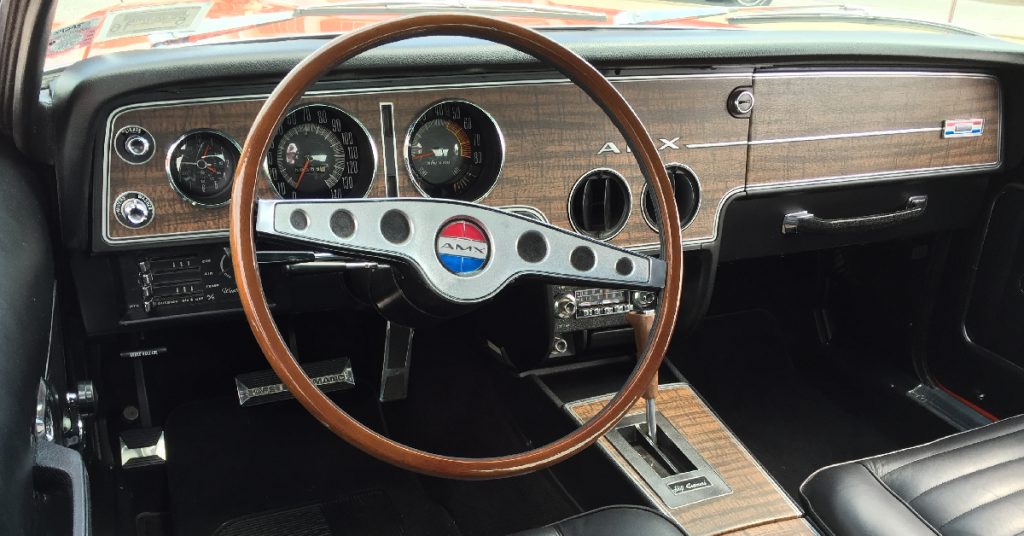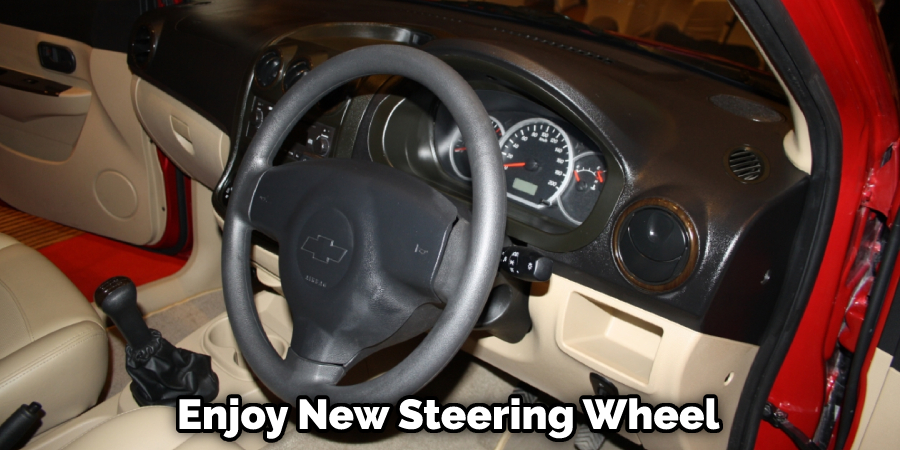When you have a rim blow steering wheel, it is essential to know how to repair a rim blow steering wheel. The following steps will show you how to do just that. Rim blow steering wheels are used in cars that have airbags. When the airbag deploys, it causes the steering wheel’s rim to blow outwards. This can be dangerous for the driver if they are not wearing a seat belt. It is important to note that only a qualified technician should repair a rim blow steering wheel.
Many people think that they can repair a rim blow steering wheel on their own, but this is not the case. If you try to repair a rim blow steering wheel on your own, you could do more harm than good. Many people have been seriously injured while attempting to repair a rim blow steering wheel. So, unless you are a qualified technician, it is best to leave the repairs to the professionals.
Summary: In order to repair a rim blow steering wheel, you will need the following supplies: -New rim -Ruler or a straight edge -Paint or a sealant -Screwdriver -Tape measure -Hollow hammer -Nail gun -Chisel -Circular saw -Wheel bearing puller -Wheel hubpuller -Wheel chipper

What Is a Rim Blow Steering Wheel?
A rim blow steering wheel is a type of steering wheel equipped with a mechanism that allows the driver to generate a horn sound by striking the outer edge of the steering wheel with their hand. This type of steering wheel was commonly used on cars from the early 1900s until the 1950s.
The purpose of the rim blow steering wheel was to allow the driver to honk the horn without taking their hands off of the steering wheel. This was especially useful in situations where the driver needed to honk their horn but also required to keep both hands on the steering wheel, such as when driving in heavy traffic.
How Does a Rim Blow Steering Wheel Work?
A rim blow steering wheel consists of two main parts: the inner rim and the outer rim. The inner rim is attached to the steering column, while the outer rim is connected to the inner rim via a series of metal spokes.
When you turn the steering wheel, the inner and outer rims rotate around each other. This action causes the air inside the outer rim to compress, which creates a ‘blow’ or ‘thump’ sound.
Rim blow steering wheels are common in older cars and trucks but can also be found on some newer vehicles. While they are not as common as they once were, they can still be found occasionally.
You Can Check It Out to Fix Camber on Lowered Truck
A Step by Step Guide on How to Repair a Rim Blow Steering Wheel
Step 1: Gather Necessary Materials and Tools
To repair a rim blow steering wheel, you will need the following materials and tools:
- Screwdriver set
- Socket set
- Pliers
- Steering wheel puller
- Replacement rim blow switch (if necessary)
- Electrical tape or heat shrink tubing
- Soldering iron and solder
- Wire stripper
- Needle and thread
- Leather or vinyl repair kit (if necessary)
- Soft cloth and cleaning solution
- Safety goggles and gloves
Step 2: Disconnect the Battery
Before beginning the repair, disconnect the negative terminal of the vehicle’s battery to prevent accidental electrical shock or damage to the vehicle’s electrical system.
Step 3: Remove the Horn Button or Center Cap
Locate the horn button or center cap on the steering wheel and carefully pry it off using a flathead screwdriver. Be gentle to avoid damaging the horn button or center cap, as they may be fragile.
Step 4: Remove the Steering Wheel
Use a socket set to remove the center nut securing the steering wheel to the steering column. Take note of the orientation of the steering wheel to ensure proper reinstallation later. Attach a steering wheel puller to the steering wheel, following the manufacturer’s instructions, and use it to remove the steering wheel from the steering column.
Step 5: Inspect the Rim Blow Switch
Examine the rim blow switch for any visible damage, such as frayed wires or broken connections. If the switch is damaged, it will need to be replaced. If the switch appears to be in good condition, test it with a multimeter to ensure proper functioning.
Step 6: Repair or Replace the Rim Blow Switch
If the rim blow switch is damaged, remove it from the steering wheel by carefully prying it out with a flathead screwdriver or pliers. Install the replacement switch by inserting it into the groove on the steering wheel and gently pressing it into place.
If the switch is functioning but has a loose connection, use a soldering iron and solder to repair the connection. First, remove any damaged wire insulation with a wire stripper. Then, twist the exposed wires together and solder the connection. Finally, cover the repaired connection with electrical tape or heat shrink tubing.
Step 7: Repair the Steering Wheel Surface (if Necessary)
If the surface of the steering wheel is damaged, use a leather or vinyl repair kit to restore its appearance. Follow the manufacturer’s instructions for applying the repair compound and matching the color to the original steering wheel material.
Step 8: Reinstall the Steering Wheel
Place the steering wheel back onto the steering column, ensuring that it is oriented correctly. Tighten the center nut using a socket set to secure the steering wheel in place. Do not overtighten the nut, as this can damage the steering wheel or column.
Step 9: Reattach the Horn Button or Center Cap
Carefully press the horn button or center cap back onto the steering wheel, ensuring that it is properly seated and secured.
Step 10: Reconnect the Battery
Reconnect the negative terminal of the vehicle’s battery.
Step 11: Test the Repaired Rim Blow Steering Wheel
Start the vehicle and test the horn function by pressing the rim blow steering wheel. If the horn does not function correctly, double-check the connections and switch installation, making any necessary adjustments.
Step 12: Clean the Steering Wheel
Use a soft cloth and gentle cleaning solution to remove any dirt or grime from the steering wheel. This will help to maintain the appearance and longevity of the steering wheel and its components.
By following these steps, you can effectively repair a rim blow steering wheel and restore its functionality and appearance. Remember to always wear safety goggles and gloves when working with automotive components, and follow the manufacturer’s guidelines for the proper use and maintenance of any tools or equipment. Regularly inspect and maintain your vehicle’s steering components to ensure optimal performance and safety.
Step 13: Maintain Your Rim Blow Steering Wheel
To extend the life of your rim blow steering wheel and prevent future issues, regularly inspect the switch and connections for signs of wear or damage. Additionally, avoid excessive force when using the horn to prevent unnecessary stress on the switch and wiring.
Step 14: Seek Professional Assistance if Necessary
If you are unable to repair the rim blow steering wheel on your own or if the issue persists after attempting the repair, seek assistance from a professional mechanic or automotive restoration specialist. They will have the expertise and tools necessary to properly diagnose and repair the issue.
Step 15: Stay Informed About Your Vehicle
Take the time to learn about your vehicle’s specific make and model, as well as any common issues or maintenance requirements. By staying informed, you can better anticipate and address potential problems before they escalate into more significant repairs.
Step 16: Share Your Knowledge
If you have successfully repaired your rim blow steering wheel, consider sharing your experience and knowledge with others who may be facing similar issues. Participate in online forums or discussion groups dedicated to automotive restoration or your specific vehicle make and model. By sharing your expertise, you can help others successfully repair and maintain their vehicles.
In conclusion, repairing a rim blow steering wheel can be a straightforward process if you follow the steps outlined above and are equipped with the necessary tools and materials. Regular maintenance and inspection of your vehicle’s steering components can help prevent future issues and ensure optimal performance and safety. By staying informed about your vehicle and sharing your knowledge with others, you can contribute to a community of automotive enthusiasts dedicated to preserving and enjoying classic and vintage vehicles.
You Can Check It Out to Repair Flywheel Teeth

Frequently Asked Questions
What is a Rim Blow Steering Wheel?
A Rim Blow Steering Wheel is a type of steering wheel that uses rim-mounted controls instead of traditional column-based levers. This design offers more control and precision when turning the vehicle, making it easier to avoid accidents.
Rim Blow Steers are becoming increasingly popular due to their safety benefits, as they reduce the chances of crashing into other objects or injuring yourself while driving. Additionally, this type of steering wheel is often preferred by drivers who have impaired vision or mobility restrictions.
Can Steering Wheels Be Recovered?
Generally speaking, it is unlikely that a steering wheel can be recovered from a car crash. Steering wheels are often pulverized by the force of the crash and become so small and jumbled up that it is almost impossible to piece them back together. If you were to attempt to salvage a steering wheel, you would likely end up frustrated and without any reward.
Why Does My Steering Wheel Click When I Turn?
One of the most common problems with cars is that they’re not adjusted correctly. This can lead to a number of issues, including wheels turning when you turn them, chevrons on the steering wheel disappearing and reappearing, and more.
The issue stems from the fact that cars are designed to cater to drivers who use two hands for steering. However, in today’s world, where many people drive using one hand or even without a seatbelt, this design isn’t ideal.
To correct these issues, your car’s alignment must be checked regularly by a mechanic. They will adjust it as necessary so that all components – such as tires and suspension – are functioning properly.
Do Tie Rods Affect Steering?
It’s possible that tie rods could affect steering, but this is largely dependent on the make and model of the vehicle. In general, tie rods are designed to prevent the wheel from rotating too far to the left or right while the vehicle is in motion. If there is too much movement in one direction or the other, it can cause damage to the tie rod and, ultimately, the steering wheel. So, while tie rods may theoretically affect steering, it’s important to consult with a qualified mechanic to determine exactly how your particular tie rod is performing.
When You Turn the Wheel, and It Makes a Noise?
The hub may be loose or there may be something caught on the gears. In some cases, simply adjusting the brakes will correct the issue. If, after trying these troubleshooting steps, things still aren’t working right, then it’s likely that your wheel needs to be replaced.
Conclusion:
It is possible to repair a rim blow steering wheel, but it takes some work. The first step is to remove the wheel from the car and take off the cover. Once the cover is off, you can see the damage that has been done. Next, use a screwdriver or other tool to pry out the old foam padding. If there is still some good padding left, reuse it; if not, buy new foam and cut it to size. Finally, reattach the cover and put the wheel back on your car. We hope you find this article on how to repair a rim blow steering wheel helpful.
